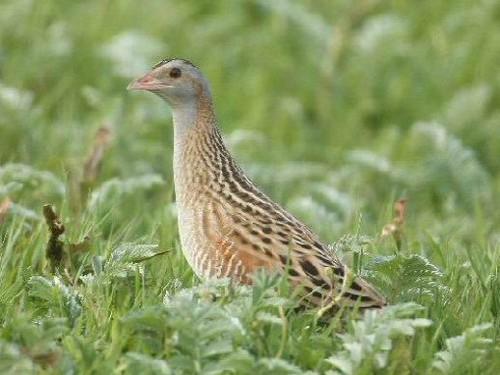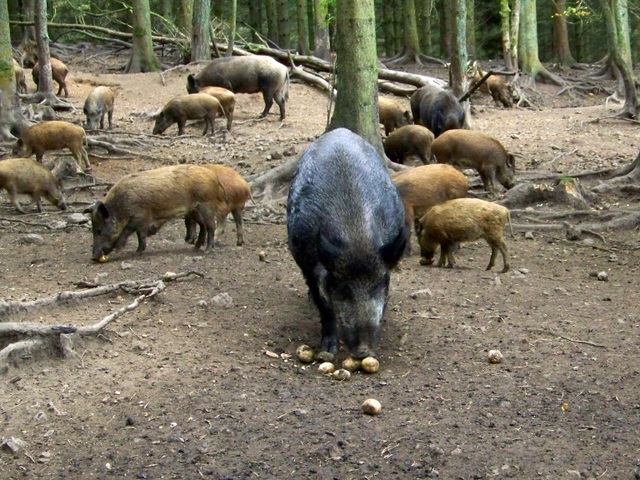Is policy too important to leave to decision makers? The case of the Infrastructure Bill
By Sarah Durant, Institute of Zoology
In April, the Zoological Society of London together with the British Ecological Society organised a one day symposium, entitled “ The Conservation Science Policy/Interface: Challenges and Opportunities”. Acting as the launch event for the BES’s revitalised Conservation Special Interest Group, the symposium brought together over 150 scientists, conservationists and policy-makers to explore how the links between science and policy can be strengthened. Among the speakers was Sarah Durant, is leader of the People, Wildlife and Ecosystems theme at the Institute of Zoology, ZSL. This blog post is an account of the talk she gave at this event.
Our society is becoming increasingly complex and, as a result, increasingly dependent on expert knowledge. This complexity has serious repercussions for wise policy-making. While policymakers have to consider a number of factors as well as evidence and science, a policy that goes against evidence may deliver the opposite of its aims. One well known example of this relationship between policy and evidence is the impact of culling badgers on the incidence of TB in cattle; Rosie Woodroffe explains this process first hand in her blog. Often scientists are key individuals who have expert knowledge to understand and communicate what can be complex scientific arguments, yet they are traditionally reluctant to engage with policy. Indeed, DEFRA’s Chief Scientist has urged scientists to be giving further encouragement for scientists to stay quiet rather than criticise policy. But should scientists leave policy-making to the decision makers? The reality is that if they remain silent, then policies will proceed without the benefit of their expertise which, for conservation scientists such as myself, may be to the detriment of biodiversity conservation.

The recent legislation in the UK for ‘environmental control of animal and plant species’ in Part 4 of the Infrastructure Act is a case in point . This legislation was intended ‘to make provision for the control of invasive non-native species’ (INNS). It provides strong new powers, including rights of access to land for the purposes of eradication or control of species and rights to recoup costs incurred in such operations. In plain English this means that if I have some land that is harbouring a target species, and I refuse to control the species, and I also refuse to allow authorities access to carry out control operations, then the authorities can gain a control order to enable them to go onto my land without my permission, control the species, and charge me for the costs of the operation.
This legislation should not have been controversial for conservationists. INNS are a major cause of biodiversity loss, particularly for islands, and the UK government has been slow to introduce powerful legislation to control or eradicate INNS. Indeed, if these new powers had been entirely confined to INNS, they would have represented an important and welcome step forward in biodiversity conservation in the UK. However, at some point, the legislation was expanded in scope beyond INNS to include native species. When and why this happened is unclear, although it was not in response to the recommendations of the Law Commission.
Thus, in the first draft of the bill that went before parliament, the species that could have come under the scope of the legislation included all those species listed on Schedule 9 of the Wildlife and Countryside Act. These are largely non-native, but they include several native species – such as barn owl, red kite, white-tailed eagle, goshawk, chough, common crane, barnacle goose, corncrake and wild boar. Even more worryingly, the bill also introduced a definition for non-native species that are ‘not ordinarily resident in, or a regular visitor to, Great Britain’. This could include a number of extinct native species such as beaver, wolf, lynx and bear. In effect, the draft legislation fixed native species as those present at one point in time. Any that arrived later, either through reintroduction or by natural colonisation, could face a risk of control or eradication.
Of course, those species that are most likely to be targets for such legislation are unlikely to be a random cross section of biodiversity. It seems doubtful, for example, that the government would grant a control order for the endearing and unproblematic corncrake. Predators are much more likely candidates, and powerful pressures could be brought to bear to encourage the issuing of control orders for any predator species likely to be caught red-clawed with a pheasant or grouse, for example. Anyone who doubts this would do well to reflect on the recent well-publicised demise of the hen harrier in England, despite its highly protected status. But predators are not the only likely targets; others include keystone species, such as beavers and wild boar, which have gained a fragile toehold in the UK. Predators and keystone species play key roles in ecosystems, and make important contributions to biodiversity. Should the UK be allowed to set a precedent of erecting legal barriers to the restoration of these species when many other countries in Europe are grappling with the messy problems of addressing human–wildlife conflict and finding ways to promote coexistence?
As scientists it was relatively easy to point out these problems in the draft Infrastructure Bill, which I, and a number of colleagues, did in our correspondence to Nature. Less straightforward was finding a solution, particularly given that parliament debates and subsequent discussions demonstrated that removing native species entirely from the scope of the legislation was a red line for politicians. Fortunately, after our letter, and to the credit of DEFRA, scientists and NGOs were able to establish a constructive dialogue with the government. But it was impossible to move forward without turning scientific criticism into constructive solutions. This sounds easy enough, but the law around these issues is messy, centred on the Wildlife and Countryside Act 1981 and its countless subsequent modifications. When talking to time-stretched policymakers, it was important that we were as specific as possible in suggestions for revisions.
Through this dialogue, the problematical definition of non-native species was removed; all native species listed on Schedule 9 (except wild boar) were put outside scope; any animals that were in a location as a result of a licensed reintroduction were also put outside scope; and native species subject to the legislation were dealt with separately to INNS. In addition, native species are now subject to a stronger test prior to the granting of a species control order or agreement (SCO or SCA) compared with INNS. However, there are still a number of problems that we were not able to resolve. In particular, we were unsuccessful in removing native species entirely from the scope of the Act. We hope that this will not matter in practice, but it is a concern that there is now a precedent for including native species within legislation designed to address INNS, and this may have implications for future legislation. There is also now a new list – Part 1B – that lists native species that can be subject to SCOs and SCAs, and there are no clear criteria as to how a species will be put onto this list. Currently it only includes wild boar and beaver, but without objective criteria it could be perceived as a hate list of conflict-causing species that a powerful land owning elite may wish to keep out of this island.

The government would argue that unlicensed reintroductions are unwelcome, and they have a point. Conservation scientists would clearly prefer a licensed reintroduction program for wild boar and beaver to the present situation in the UK resulting from illegal releases. This would ensure that the good genetic stock are used (avoiding current concerns of domestic pig/boar hybrids); the most appropriate sites are selected; and the animals’ health is assured. The Infrastructure Act will now make it much harder for unlicensed or accidental reintroductions to succeed. This is not a bad consequence, but it seems fair that, in return, to expect the government to stop dragging its feet in reintroductions, and become more proactive in restoring lost biodiversity back to the UK.
Other outstanding issues with this part of the Infrastructure Act relate to its effectiveness at addressing plant INNS. While SCOs and SCAs can be brought against animal species without them being separately listed on Schedule 9, a plant species has to be listed before a SCO or SCA can be brought, adding potential delays. Finally, it is unclear whether a SCO or SCA could be brought about against species listed in Annex IV of the Habitats Directive, as Article 12 prohibits the killing of such species. Annex IV species include beaver, as well as other potential candidates for reintroduction in the UK such as lynx.
Despite these provisos, the legislation is substantially improved, and is no longer a threat to existing native species, or an impediment to future reintroductions. What did I learn from this process? A number of things, in no particular order: 1) Published science helps –a letter from scientific experts has gravitas, and can gain the attention of policymakers, particularly if it is backed up by press interest; 2) If scientists criticise, wherever possible, they should also make efforts to engage with policymakers and legislators in the search for constructive solutions; 3) Law may appear daunting, and good legal advice is important, but law is ultimately based on logic, and scientists are good at logic and should not be put off; 4) developing a consensus across scientists and NGOs is crucial, so as to speak as one voice and simplify responses for time-stretched policy makers; and 5) Policymakers want robust legislation just as much as scientists and very often a compromise can be found.
As scientists, we may have key expert knowledge and understanding that can help improve legislation and policy – if we don’t engage in this then who will?
Acknowledgements:
This work was the result of a collaboration with John Muir Trust, RSPB, Plantlife, ClientEarth and Friends of the Earth. Within ZSL, Nathalie Pettorelli played a particularly important role.
Dr Sarah Durant is leader of the People, Wildlife and Ecosystems theme at the Institute of Zoology, ZSL. She also heads the Tanzania Carnivore Program and the Range Wide Conservation Program for Cheetah and African Wild Dog. She has been working for over 20 years in conservation, focusing on developing effective and sustainable approaches to conserve threatened species. She has just recently become an Associate Editor at the Journal of Applied Ecology.
The views expressed in posts on this blog are personal to the author and are not necessarily shared by any sponsors or owners of this blog or any other person or entity involved in creating, producing or delivering it and no such party shall be held liable for any statements made or content posted.
This post from Sarah Durant is also available on the The Applied Ecologist’s blog and the ZSL Wild Science blog.
Like what we stand for?
Support our mission and help develop the next generation of ecologists by donating to the British Ecological Society.